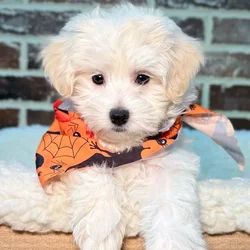Maltese

The tiny Maltese, “Ye Ancient Dogge of Malta,” has been sitting in the lap of luxury since the Bible was a work in progress. Famous for their show-stopping, floor-length coat, Maltese are playful, charming, and adaptable toy companions.




Want to know more about Maltese ?
Breed Traits
General Appearance
The Maltese is a toy dog covered from head to foot with a mantle of long, silky, white hair. He is gentle-mannered and affectionate, eager and sprightly in action, and, despite his size, possessed of the vigor needed for the satisfactory companion.
Size, Proportion, Substance
Head
Neck, Topline, Body
Forequarters
Leg and Feet
Hindquarters
Coast and Color
Coat
Gait
Temperament
Group
Toy
Heritage
Personality
Exercise/Energy Level
Interesting To Know
The Maltese has been known as "Canis Melitaeus", the "ancient dog of Malta", the "Roman ladies' dog", and the "Maltese lion dog" The Greeks erected monuments to the Maltese The Roman governor of Malta, Publius, had a Maltese named Issa during the time of the Apostle Paul
About
Maltese are affectionate toy dogs weighing less than seven pounds, covered by a long, straight, silky coat. Beneath the all-white mantle is a compact body moving with a smooth and effortless gait. The overall picture depicts free-flowing elegance and balance. The irresistible Maltese face—with its big, dark eyes and black gumdrop nose—can conquer the most jaded sensibility. Despite their aristocratic bearing, Maltese are hardy and adaptable pets. They make alert watchdogs who are fearless in a charming toy-dog way, and they are game little athletes on the course. Maltese are low-shedding, long-lived, and happy to make new friends of all ages. Sometimes stubborn and willful, they respond well to rewards-based training.
History
Standard
Nutrition
Grooming
Exercise
Training
Health


















